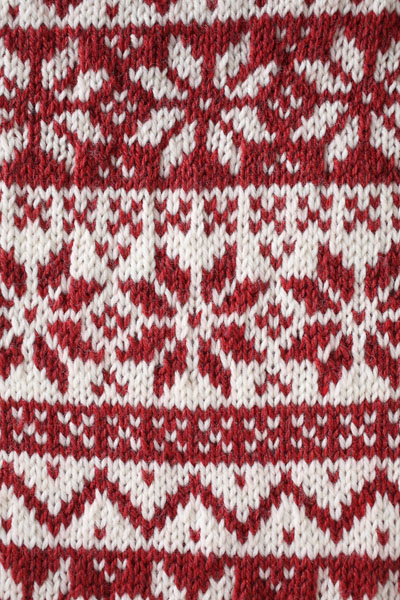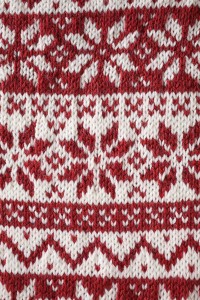
Creating knitwear that dazzles is easy when you work in color, but adding color isn’t always as simple as it sounds. Whether you want a simple striped sweater or you’re looking to challenge yourself and follow a complex Fair Isle pattern, there are a few simple tips to follow to ensure your work turning out
 Creating knitwear that dazzles is easy when you work in color, but adding color isn’t always as simple as it sounds. Whether you want a simple striped sweater or you’re looking to challenge yourself and follow a complex Fair Isle pattern, there are a few simple tips to follow to ensure your work turning out as you envision it. Do a little research and figure out what common colorwork mistakes are, find a pattern that you won’t mind ripping apart and re-creating over and over and start your trial and error journey. Follow the four tips below, and you’ll be well on your way.
Creating knitwear that dazzles is easy when you work in color, but adding color isn’t always as simple as it sounds. Whether you want a simple striped sweater or you’re looking to challenge yourself and follow a complex Fair Isle pattern, there are a few simple tips to follow to ensure your work turning out as you envision it. Do a little research and figure out what common colorwork mistakes are, find a pattern that you won’t mind ripping apart and re-creating over and over and start your trial and error journey. Follow the four tips below, and you’ll be well on your way.
- Choose your color palette. Picking colors is important. You don’t want to end up with colors that you dislike, and you want to make sure your color choices complement each other. Try using a color wheel while deciding your color scheme, or research different color palettes before starting. A great place to look is at different colorwork patterns; if you look at different patterns, you can see what the colors look like next to each other, plus you might get some new ideas for combinations you hadn’t thought of before. If you decide you dislike them, you can change them without buying skeins and skeins of extra yarn.
- Check your tools. Your colors are picked, that’s excellent! Now, do you have the right tools? Different needles can make your knitting easier or more difficult, and you don’t want to end up with needles that will make you want to quit your project. Wooden needles are great for colorwork because of their grip, so the yarn will not slide off and cause you unnecessary grief. These needles also help you spread your yarn, so your floats will be evenly spaced. Work with needles that do your work for you, and remember to use tools that you will feel comfortable with.
- Keep an eye on your tension. While your needles can help you, remember that they won’t fix your floats completely. Be wary of puckering and tight knitting, and make sure your tension remains the same throughout your project, especially if you are making a pair of socks or mittens. If your tension is tight on the first piece and loose on the second, one half of your project will fit while the other will be too tight! Check on your floats as you work, and try looking up video tutorials online if you can’t figure out how to catch them. The general rule is if a float is longer than an inch, catch it, but if you’re just starting out, a visual will be infinitely helpful.
- Don’t forget to block. When you are finished with your project, you’ll feel so great about yourself! But wait, why does that look a little wonky? And why doesn’t that piece look exactly how you want it? Hold your horses, knitters, and don’t pick apart that beautiful piece of art just yet. After you finish working up your project, block it and then judge it. Colorwork looks better with a little love, and after blocking and wearing it, you are sure to change your opinion. And if you still don’t like it? Don’t sweat it, and keep practicing!
Practice makes perfect, and colorwork knitting is no exception to that rule. Great colorwork takes time, and if you let yourself become frustrated in the first twenty minutes or the first few projects you try to make, you will never want to try it again. When you first start, try making swatches of different patterns with different colors until you get the hang of it and feel comfortable enough to try working up a full project. It might take you five tries or it might take you fifty, but you will get there in the end, and after creating that first project you’ll feel like a creative genius. 


I’ve done color work for years and this is the best advice I can give: making sure your tension is correct on the first rows “sets the tone” for the whole garment. Once you get going this “tension pattern” that you established will pretty much happen by itself. If its too tight-it will continue to be and vice-versa. Good luck and enjoy. Another tip-if you can’t find a pattern that you love-get some graph paper and make your own. Much easier than you would think.